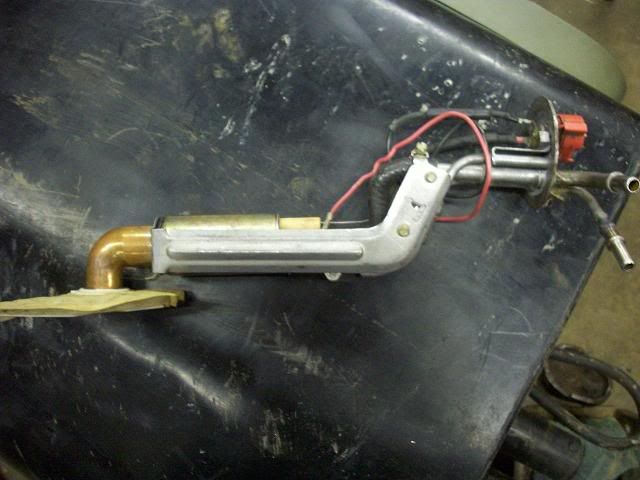I have run EFI in retro vehilces nearly every way possible. This is my fouth fuel injected antique. I have injected a 51 chevy truck, a 55 bellaire, a 350 chevy in a CJ5, and my bronco. I have tried nearly everyway you can pipe the pumps. I started doing this in 1989 on the 51. THere wasn't alot of information availble back then and most people thought I was an idiot.
First, In my 51 chevy truck (TPI) I ran and extenal tank with the High pressure pump in the external tank. The external tank was located under the main tank and pump drew fuel directly from tank behind the seat. Return went back to the tank behind the seat. This is by far the best system I ever put in. Fuel flowed from the main tank to the surge without porblems even with very dirty filters and the pump was easy to change if you needed to, but was constanly bathed in cool fuel and it ran over 150K before I took the system out and put it in my Belaire. Unfortunately you can only do it when the tank is behaind the seat.
Second, I ran a single external pump drawing diretly from tank in my 55 chevy. I ran a cheap fuel filter between the tank and the pump just to protect the pump. That senario left me road stranded more than once for several reasons. Dirty filters and dead pumps due to heat. You might be surprised how much crap thereis in pump gas.
Third, after loosing several external pumps to heat I used the same external tank from the 51 and let the HP pick fuel up out of teh 55 chevy tank. It worked good. Pumps lasted. Infact I never changed a pump once I did that, but filters between the tank and the pump were still aproblem. I just piped them where it was easy to change them and always carried a new one with me. One stop at one bad station could kill a good filter, with that set up.
Fourth, I put a 350 TPI in my CJ5. This time I was in a hurry and just cut a new hole in the top of the tank to just drop the pump in the tank. Put a sock on the pump to protect it. Worked great as long as you kept the tank more than a 1/4 full offroad. You could run the tank down to almost vapors on the street but start up a hill or off camber to the passsenger side and you would loose fuel pressure.
Fifth, I took the tank out and cut a 1-1/2" sump in the bottom and then put a 2" baffle in the tank with just a few 1/4" hoile in it and the return dumped into the sump. This set up never gave me any trouble and I ran it for almost ten years before I sold it to a buddy. He still has it and beated the crap out of it offroad. Still has the same fuel pump in it from the start. By far the best way to go. I cut an access panel in the floor of teh Jeep to allow the pump to be changed without pulling the tank. I wish I had set my Bronco up this way, I believe it to be the most reliable.
Sixth, my last FI project, my 71 bronco. I used a marine high volume 15 PSI pump to draw fuel out of the bronco tank through a filter and into a 3/4 gallon baffled surge tank I made from 6" exhaust tubing. The HP injection pump is mounted on the frame rail and draws out of the bottom of the surge tank through another filter. Return ties into the surge tank and turns down. There is also another line that allows return from the surge to the main tank. Befits of this set up are you can run the main tank completely out of fuel if you keep sloshing fuel onto the marine pump pick up. It will run a very long time without any fuel coming from the main tank. Bad things are its noisy as hell and both these pumps are susutible to heat failure. I only have about 5000 miles on this system. It is flawless except for the potential of pump falure. Good news is they are easy to find and they are both usually in stock at distribution warehouses. Bad news, if that marine pump dies on a trip it might take days to get another. I actually diconnected my marine pump and piped the external pump direct to the main tank just to see if I ought to carry a marine pump with me. The HP was able to draw fuel through a filter and run the engine just fine with 1/4 tank of gas, but offroad it burped sometimes. With more than a 1/2 tank it worked just fine. So I do not carry a spare marine pump.











